In the Lower Rhine region, it’s possible to observe how we at OGE approach a major project with regard to logistics and organisation. We talked to those responsible on site about typical and extraordinary challenges of everyday life on the construction site. We also saw for ourselves what a major role communication plays in it all.

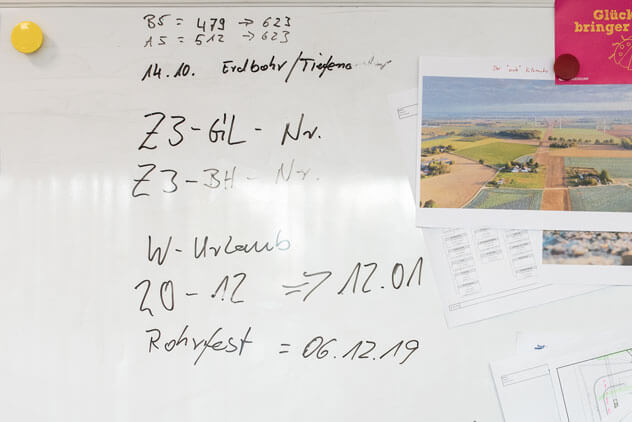
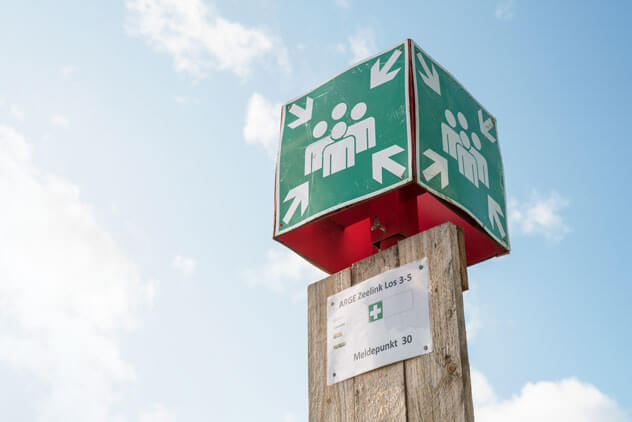
Daily life on the construction site
Lots of words, even more action.

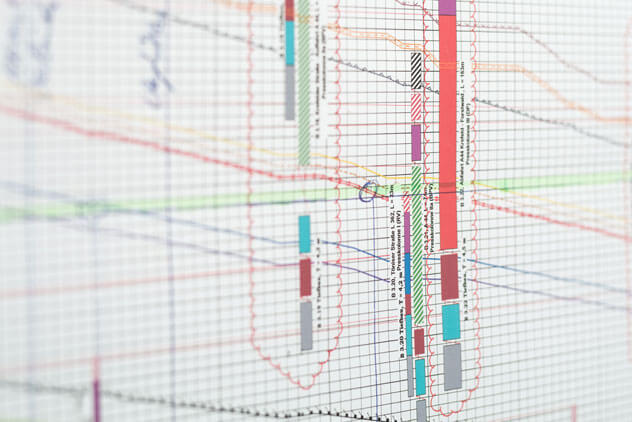
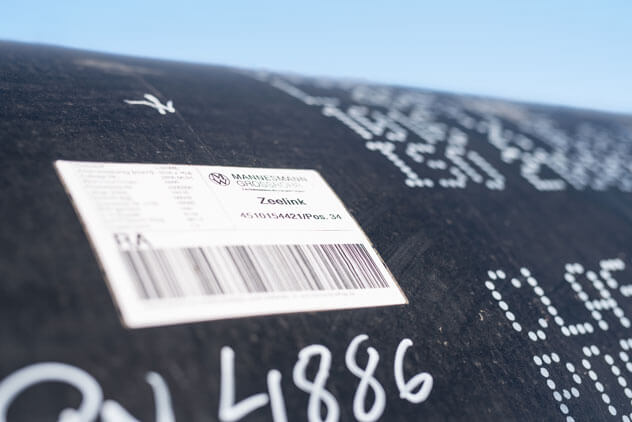
“Das Leben ist eine Baustelle”, is the name of a German movie — “life is a building site”. For us at OGE, our day-to-day work on projects is precisely the reverse: A building site is life!
Full of plans, goals and requirements. Yet it is also full of surprises and uncertainties. Major construction sites like that of Zeelink encapsulate life in all its glory: how the site develops, how it grows as tasks are completed, how sometimes there are stumbling blocks, how things get back on track, and how, with ambition, expertise and teamwork, goals can be achieved.
Construction means digging, drilling, creating — without much “blah blah blah”. And yet a pipeline cannot take shape without constant communication about every single metre.
Planning discussions open to all
A 216-kilometre route with more than 1,000 kilometres of line variants: This was the status of Zeelink during the planning process. In addition to this, press releases were published and all stakeholders informed: including all mayors, district authorities and municipalities along the planned route. This involved eight so-called dialogue markets in important places where we presented the project and offered the opportunity for any interested residents and property owners to ask questions. We also organised a further 16 dialogue markets during the planning approval process.
Always there on site: Lothar Strümpel, OGE’s senior site manager. He bears primary responsibility for large sections of the construction site, and with his ten-person team monitors contractor quality and costs. He has also kept up discussions with all interest groups since the project began.
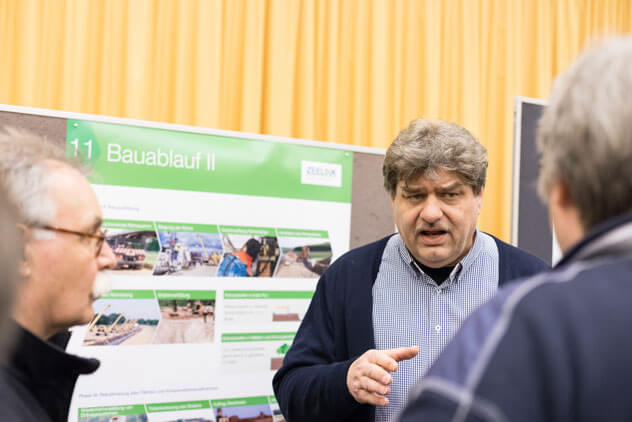
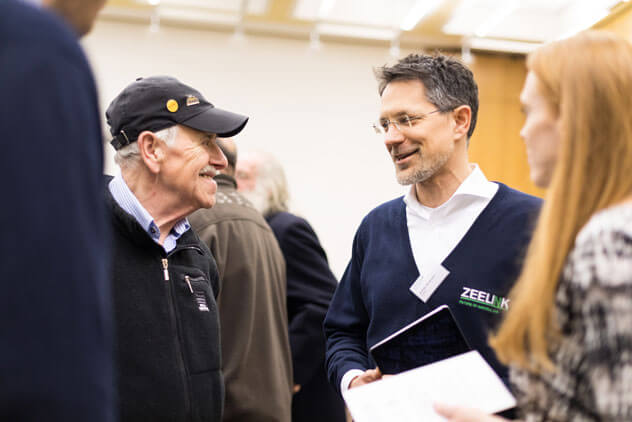
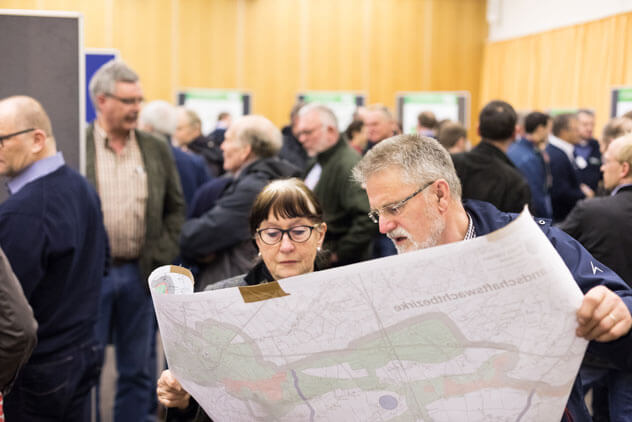
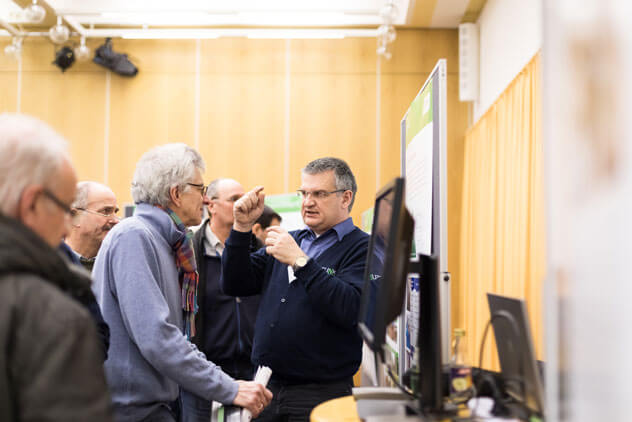
At every dialogue market between 15 and 20 colleagues were present and talked about property rights, environmental protection, route planning, safety and construction phases. We showed the property owners the plans — and received plenty of valuable hints that helped us moving forward with the specific route planning.
A different kind of family-run company
Construction of a pipeline requires ten different trades at the same time. Metre by metre, the construction site moves forward — by approximately 350 metres per day. Planning is always three to seven days in advance. Such a complex construction site requires good cooperation among all the trades involved — there’s no room for big egos here. It’s not just the pipeline segments that are welded where we are concerned: We also work hard to form a neatly welded team on site too. A little family of experienced colleagues who have complete trust in one another.
We support one another, look beyond our core tasks and help one another to make sure we are all doing a good job. When there are 50 machines on site, there’s a good chance at least one will fail every day. As part of a team, we are always able to solve problems like this quickly. That’s the way we work from dawn till dusk. And sometimes even longer when, for example, work needs to be connected up to exposed gas pipelines. Sometimes we go out after work to share a meal and mull over the day we’ve had.
Andreas Dötsch is the senior site manager for the group of contractors. He manages around 100 employees — specialists in various different fields — in close collaboration with his counterpart at OGE.
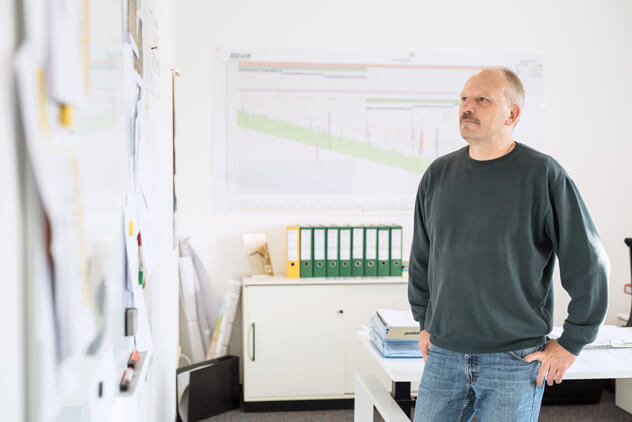


The ABC of excavated soil
A lot of earth has to be removed for a pipeline to be laid. This doesn’t just mean an excavator is simply let loose to dig holes. Weekly reports document the handling of the different layers of earth with photos, with explanations provided to the authorities. At the end of the construction time, everything on the surface has to look and grow like it did before.
The soil scientist supervising the site provides recommendations on where the ground is delicate and which areas are suitable for excavators weighing several tons. Here and there they might also put a stop to excavation work when the ground is too wet after heavy rainfall. In such cases, they often seek out direct exchange with the excavator operators on site in order to find pragmatic solutions.
Throughout the entire construction period, soil scientist Thomas Baum makes sure that the earth is not altered in any harmful way.
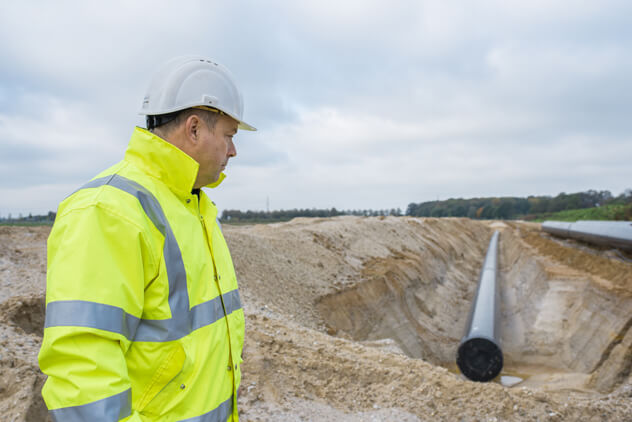

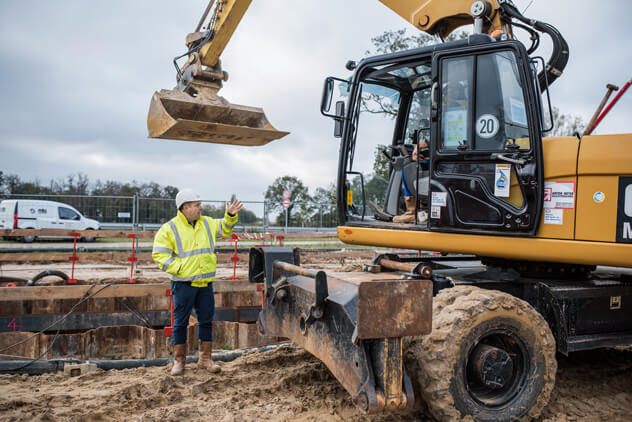



Particular attention is paid to the topsoil. It has to be excavated cleanly and kept safe. Later on, it will be planted with vegetation so that the soil life is preserved and nothing is removed. Where possible, the vegetation planted here will even be chosen as specifically bee-friendly in order to create ecological added value.
These sorts of decisions are taken in agreement with the environmental experts on site.
Bats in residence – a waiting game
Daniel Hüls is an environmental expert who supervises the site from the beginning to the end of construction. He also takes care of the site’s neighbours from the animal kingdom.
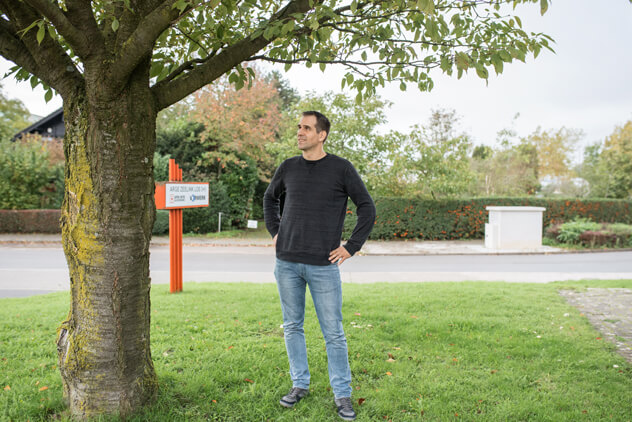
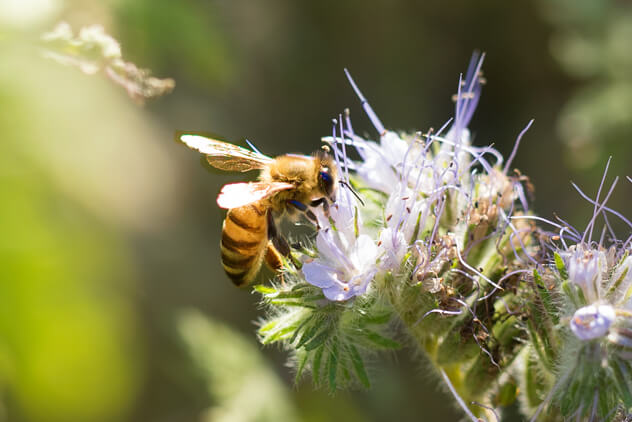
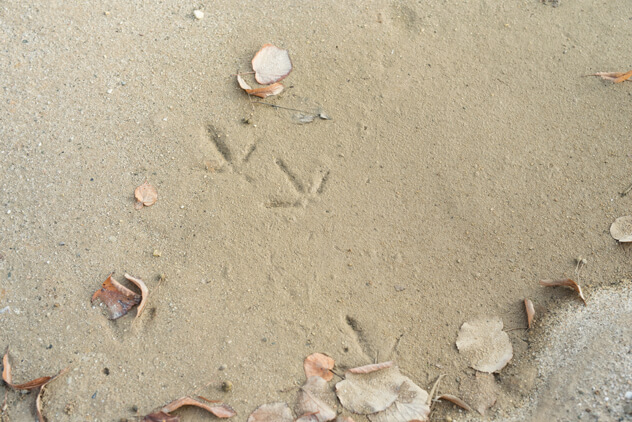
Right at the beginning, before any construction actually starts, our environmental expert takes a look at the stock of trees along the route, naturally in agreement with authorities and property owners. Each individual tree that has to be felled is thoroughly scrutinised. If we find any abandoned hollows from woodpeckers or bats in the trees, then we close them up. If the hollows are still in use then the tree cannot initially be felled. In such cases, we need to wait until the animals have left the hollows. Of course we also install nesting boxes so that the bats or bird varieties have an alternative to their tree trunks.
While construction is going on, the environmental expert is also responsible for providing animal visitors with alternative routes and flight paths out of the excavations.
Once the pipeline has been installed and the ground re-laid, he supervises the reforestation and replanting. After all, whatever used to be wooded needs to be wooded again.
Safety at the highest level
In the risk assessment, each trade and each fundamental step of work is evaluated and subsequently executed in line with these rules. Site managers, foremen, team leaders — everybody coordinates and discusses important points with one another time and again.
As early as the planning phase, our safety officer develops a standardised chain of reporting that functions immediately and automatically in order to quickly defuse critical situations where necessary. Here, of course, he keeps an eye on all those involved, although with a particular focus on situations in which third parties might be at risk. This applies right down to something as simple as cleaning the roads our construction vehicles have been crossing. Here, for example, residual mud and gravel has to be removed in order to avoid any risk to third parties.
We maintain a very high level of safety. Rolf Wiedmann, the OGE team’s safety officer, makes sure of it.

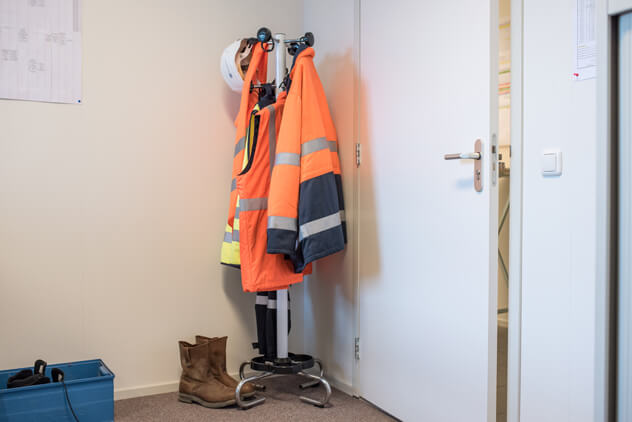
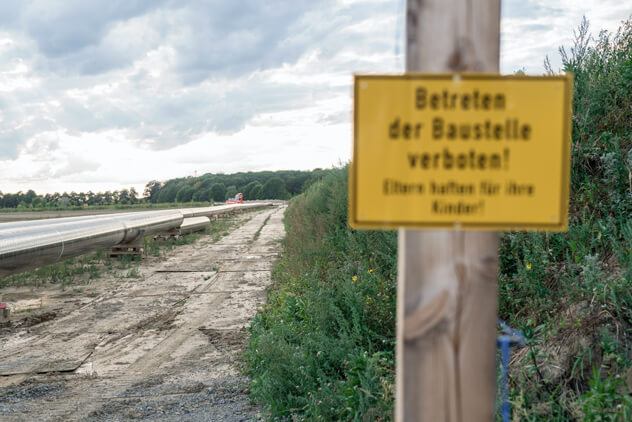
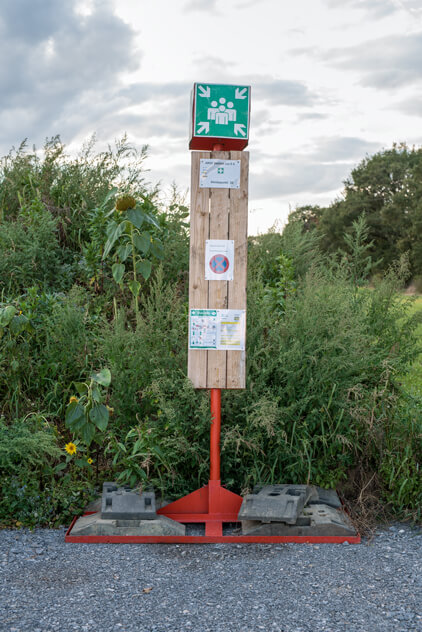
This also includes solutions for everyday communication — particularly since the individual teams include different nationalities, often without one particular common language. So how do you tell people to “be careful” for example? For this, specific, universally understood expressions and hand gestures are agreed on.
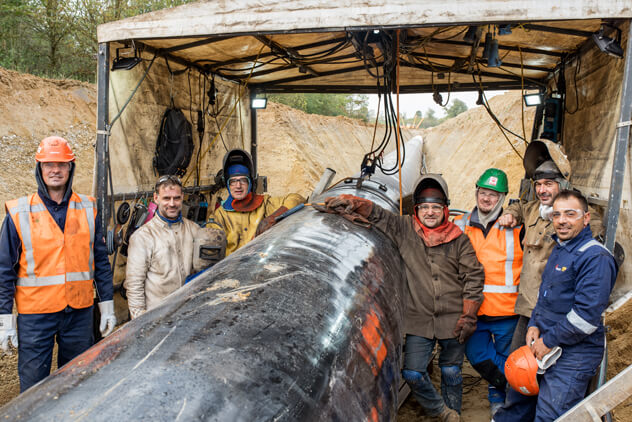
Antonio, Hovoje, Jesus, José Luis, Luis Alfonso, Gábor and Gabriel are a well-oiled team of welders who manage to work well and safely even with few words.
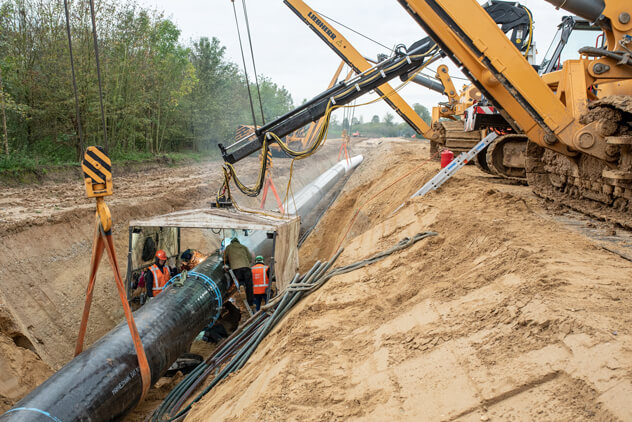
Our most important tool: language
If there is one common thread that runs from the first day of the planning application through all the stages of planning to actual realisation on the construction site, then it’s communication. At every stage of the project, in every moment, people talk to each other. This ranges from the state chancellery and the Ministry for the Environment to excavator operators who, for example, are given recommendations on how many centimetres of the second layer of soil they should remove together with the top layer. In dealings with authorities, residents, farmers, local politicians, and naturally with all those involved in the construction activities, collaboration will only work with good communication.